To build thriving pollinator corridors along boundaries, strategically place diverse native plants that flower sequentially throughout seasons. Create multilayered structures with trees, shrubs, and ground cover to support various pollinator species. Connect fragmented habitats with wide, plant-diverse pathways that can boost pollinator visits by up to 50%. Add shallow water features with landing zones, and involve your local community in the design process. These thoughtful boundary elements transform simple property lines into vibrant ecological sanctuaries.
Strategic Placement of Native Plants for Boundary Definition
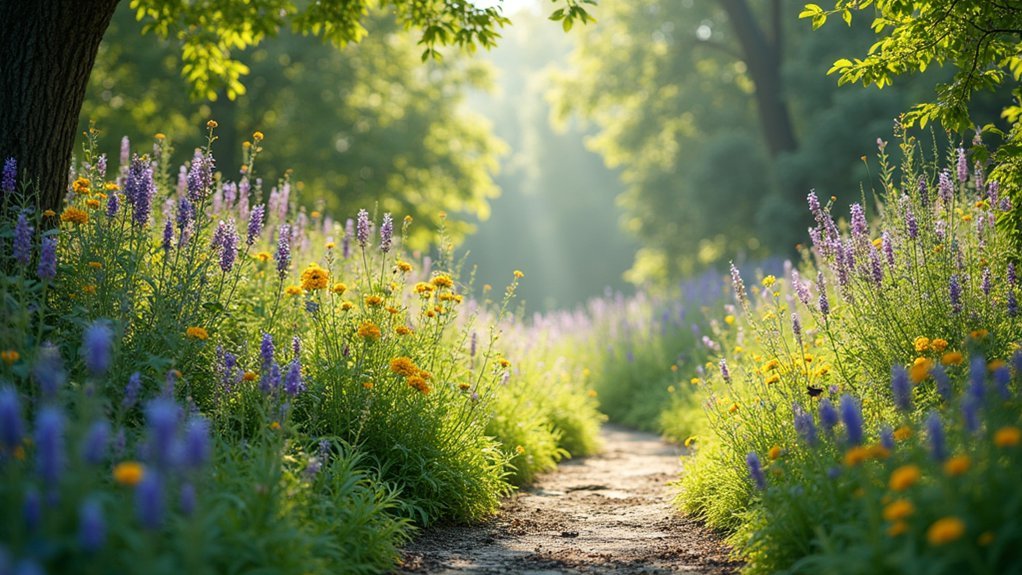
While defining your property lines with traditional fencing works well, strategic placement of native plants offers a dual benefit: clear boundary definition and essential pollinator support.
You’ll create natural barriers that serve as pollinator habitats while clearly marking your property’s edges.
Select diverse species that flower at different times throughout the growing season to provide continuous nectar sources.
This succession of blooms guarantees pollinators have reliable food sources from spring through fall.
Vary your plantings with different heights and structures to attract a wider range of pollinators.
Dense arrangements of shrubs and wildflowers along these boundaries also function as windbreaks, sheltering bees and butterflies from harsh conditions.
Consider mapping your native plant placements to track their impact on local biodiversity, allowing for future refinements to your pollinator corridor.
Creating Multilayered Vegetation Structure Along Corridors
Although single-level plantings provide basic support for pollinators, developing a multilayered vegetation structure dramatically enhances your corridor’s effectiveness.
By incorporating native plants at multiple heights, you’ll create a complex habitat that boosts pollinator populations and improves resilience against environmental stressors.
To maximize plant diversity in your corridor:
- Start with tall native trees that provide canopy coverage and serve as anchors for cavity-nesting species.
- Add medium-height shrubs that offer protected foraging zones and additional nesting opportunities.
- Incorporate ground-level flowering plants that bloom in succession throughout the seasons.
This vertical integration creates microclimates that protect pollinators during weather fluctuations.
Research confirms that multilayered corridors support greater abundance and diversity of pollinators—essential contributors to ecosystem health in your landscape.
Maintaining Connectivity Between Pollinator Habitat Fragments

Since habitat fragmentation poses one of the greatest threats to pollinator survival, establishing and maintaining robust connections between habitat patches becomes critically important.
To combat habitat loss, you’ll need to design corridors that enable pollinators to move safely between isolated areas. Your wildlife corridors should feature diverse native plants that provide continuous food sources throughout the growing season.
These pathways can boost pollinator visitation rates by up to 50% while enhancing genetic diversity among populations. For effective pollinator protection, guarantee your corridors are wide enough to support multiple species and their varying needs.
Don’t forget to monitor your corridors regularly. Evaluation helps you understand which elements are working and what adjustments might further improve connectivity, ultimately strengthening the resilience of your local pollinator communities.
Incorporating Water Features and Shelter at Corridor Boundaries
Beyond plant diversity, your pollinator corridors need water features and shelter to fully support insect communities at vital boundary areas.
Creating accessible hydration stations improves survival rates and attracts diverse pollinators to your habitat.
Thoughtfully placed water sources become vital sanctuaries, transforming boundaries into thriving hubs of pollinator activity.
For maximum effectiveness:
- Install shallow water features with flat stones or gradual edges, preventing drowning while providing safe landing zones for thirsty pollinators.
- Add gentle movement to water sources using small solar fountains or bubblers—this attracts beneficial insects while deterring mosquito breeding.
- Create natural shelter along boundaries using brush piles or logs, offering essential nesting sites for solitary bees and other pollinators.
These boundary enhancements do more than just attract pollinators—they contribute to ecosystem resilience by providing important resources that support diverse pollinator populations throughout their life cycles.
Community-Driven Design for Sustainable Pollinator Pathways
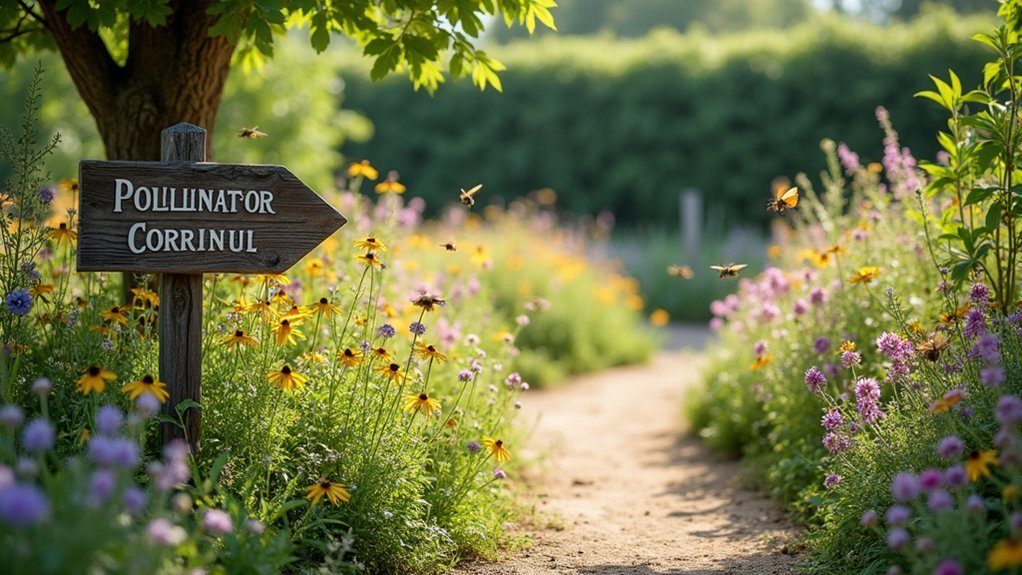
Creating truly sustainable pollinator corridors requires more than just ecological understanding—it demands genuine community engagement and collaborative design approaches.
When you involve neighbors in selecting pollinator-friendly plants, you’ll establish pathways that genuinely reflect local ecosystems.
Community planning workshops help identify ideal planting locations—sunny, well-drained areas where native plants can thrive. You’ll find that local involvement fosters ownership, ensuring long-term maintenance of these essential habitats.
Educational sessions can teach participants about which native plants support pollinators specific to your region, enhancing biodiversity while creating interconnected green spaces.
The real power of community-driven design lies in sustainability; when people understand the importance of supporting local pollinators, they’re more likely to maintain these corridors, creating resilient ecosystems that benefit everyone.
Frequently Asked Questions
What Is a Pollinator Corridor?
A pollinator corridor is a connected pathway you’ll create to help bees, butterflies, and other pollinators travel safely between habitats. It links fragmented areas, providing food sources and nesting sites they need to survive.
What Is the Best Landscaping for Pollinators?
You’ll create the best pollinator landscaping by planting diverse native flowers that bloom throughout seasons, grouping plants by bloom time, including milkweed and coneflowers, adding water features, and avoiding pesticides completely.
What Materials Can Be Used to Build a Pollinator Habitat?
You’ll need native plants, logs, branches, leaves, shallow water features with stones, organic mulch, and vertical structures like trellises. These materials create food sources, nesting sites, water access, and diverse microhabitats for pollinators.
How Do You Start a Pollinator Pathway?
To start a pollinator pathway, select sunny spots, plant diverse native flowers that bloom throughout seasons, add water sources and nesting areas, collaborate with neighbors, and maintain your plantings regularly to support local pollinators.
In Summary
As you build your pollinator corridors, remember that boundaries aren’t barriers—they’re opportunities. You’ll see greater success when you’ve created layered, connected pathways with strategic native plantings and essential resources. Don’t work in isolation; involve your community in designing sustainable networks. Your thoughtful corridor boundaries won’t just define spaces—they’ll transform them into thriving ecosystems that connect and sustain our precious pollinators for generations.

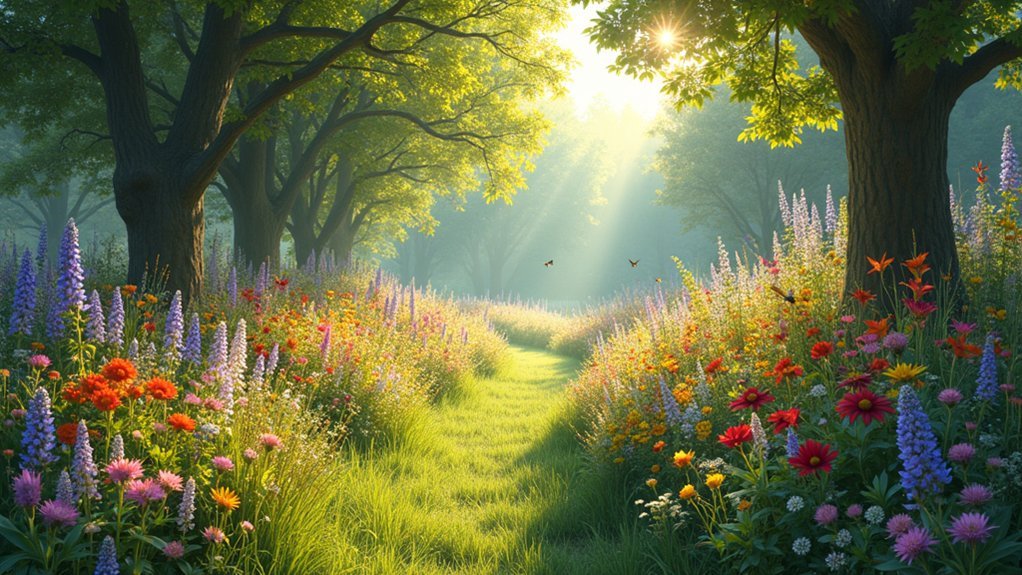

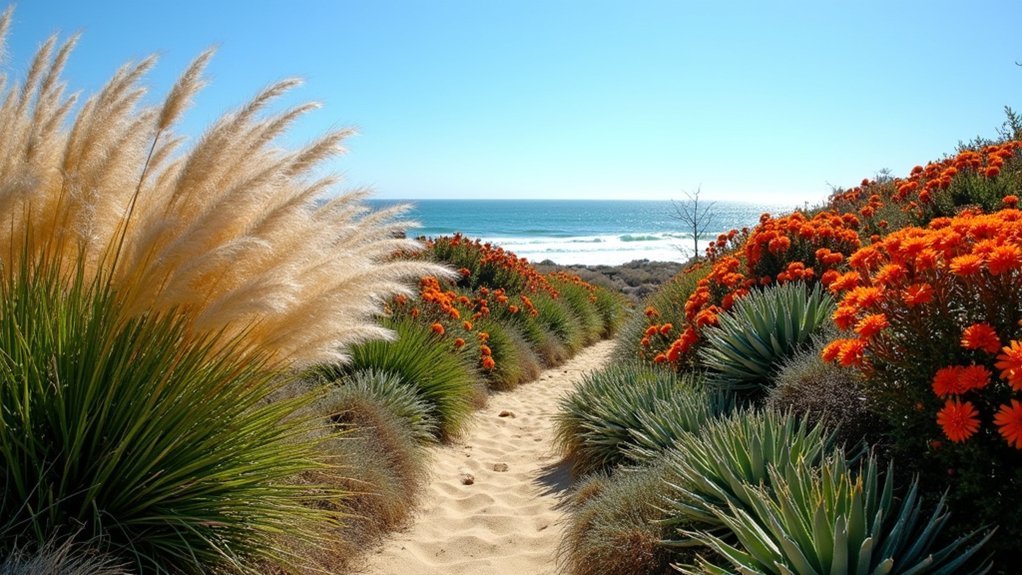
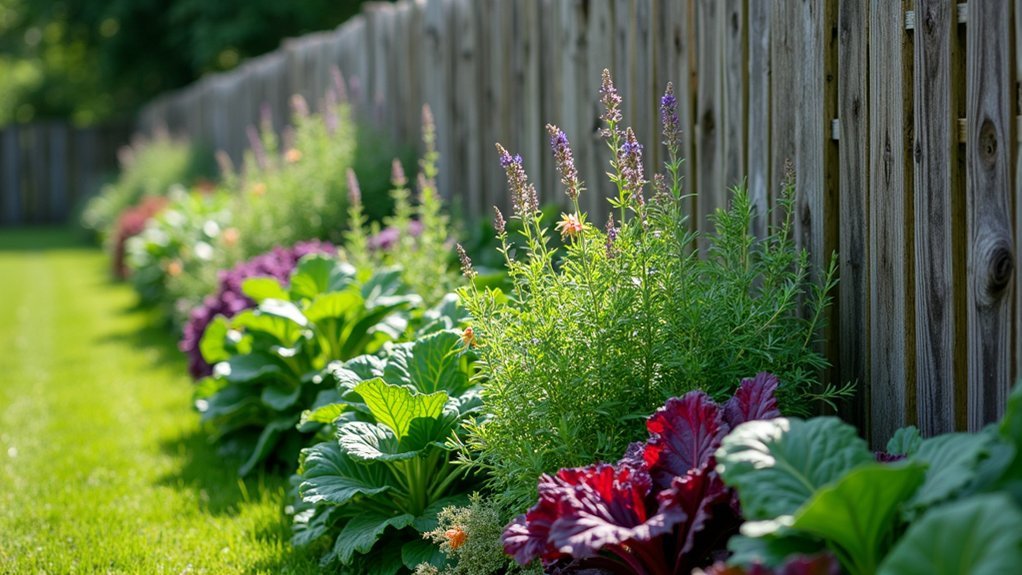
Leave a Reply